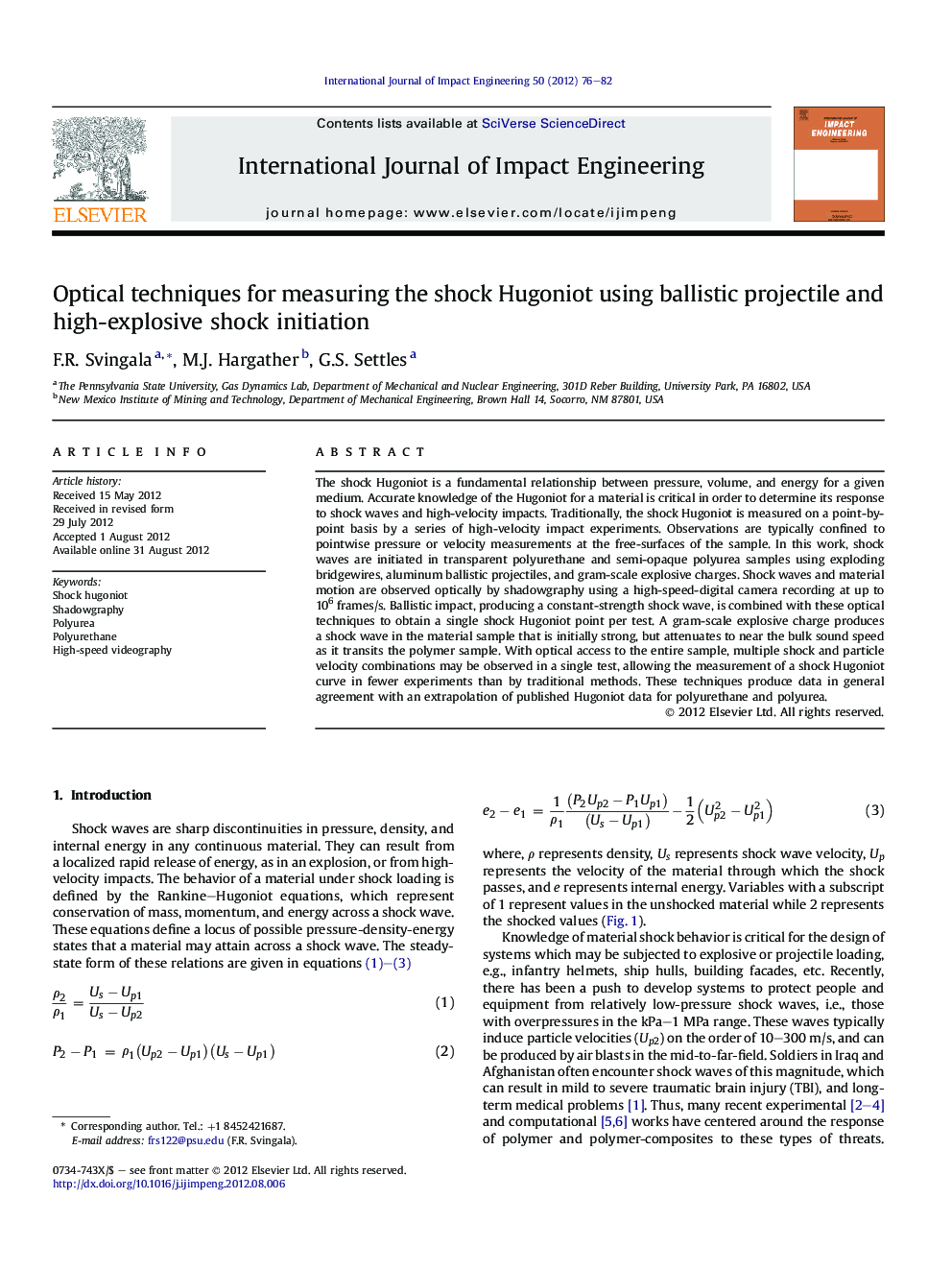| Article ID | Journal | Published Year | Pages | File Type |
|---|---|---|---|---|
| 783068 | International Journal of Impact Engineering | 2012 | 7 Pages |
The shock Hugoniot is a fundamental relationship between pressure, volume, and energy for a given medium. Accurate knowledge of the Hugoniot for a material is critical in order to determine its response to shock waves and high-velocity impacts. Traditionally, the shock Hugoniot is measured on a point-by-point basis by a series of high-velocity impact experiments. Observations are typically confined to pointwise pressure or velocity measurements at the free-surfaces of the sample. In this work, shock waves are initiated in transparent polyurethane and semi-opaque polyurea samples using exploding bridgewires, aluminum ballistic projectiles, and gram-scale explosive charges. Shock waves and material motion are observed optically by shadowgraphy using a high-speed-digital camera recording at up to 106 frames/s. Ballistic impact, producing a constant-strength shock wave, is combined with these optical techniques to obtain a single shock Hugoniot point per test. A gram-scale explosive charge produces a shock wave in the material sample that is initially strong, but attenuates to near the bulk sound speed as it transits the polymer sample. With optical access to the entire sample, multiple shock and particle velocity combinations may be observed in a single test, allowing the measurement of a shock Hugoniot curve in fewer experiments than by traditional methods. These techniques produce data in general agreement with an extrapolation of published Hugoniot data for polyurethane and polyurea.
► The shadowgraph technique is used to determine the shock Hugoniot of polymers. ► A decelerating wave is used to observe multiple points on the shock Hugoniot in a single experiment. ► The shock Hugoniot of a transparent polyurethane and an opaque polyurea are measured.
